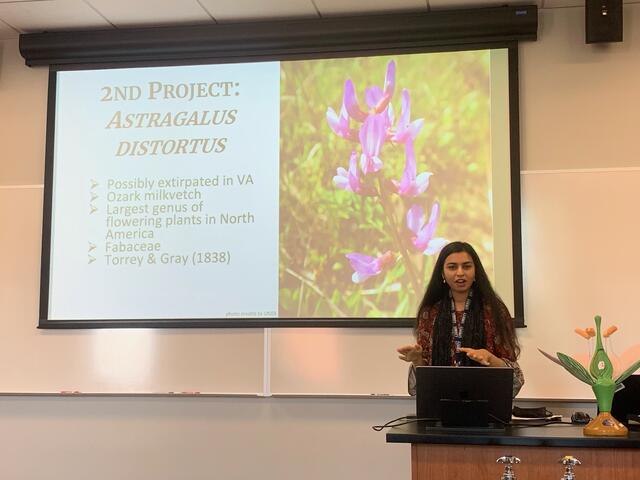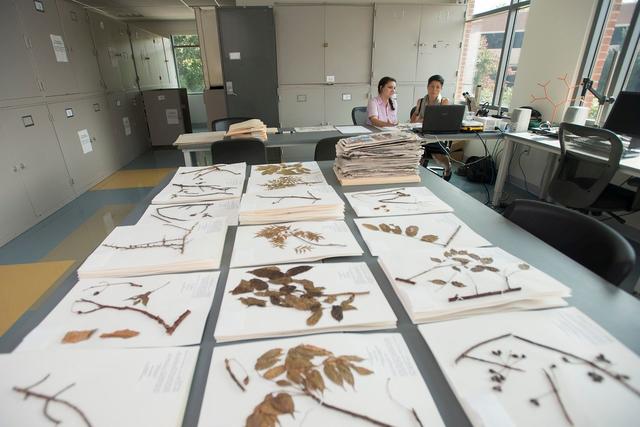Admission CTAs
Mason botanists help rediscover extinct plant species
A research team of students, faculty and alumni at George Mason University, led by Andrea Weeks, Associate Professor, Associate Chair of Research, Department of Biology, helped rediscover a population of Ozark Milkvetch on Short Mountain in Shenandoah County.
On May 5, 2022, Weeks, and Mason biology graduate student Mathew Sheik, collaborated with Senior Botanist Johnny Townsend and Vegetation Ecologist Joey Thompson from the Virginia Natural Heritage program to make this rediscovery.
Hundreds of individuals of the species were found on a large calcium rich shale barren, allowing the rank of the species to be changed from state Historical (SH) to state Critically Imperiled (S1). The species is known in only six locations in Virginia, most from collections in the 1930s. Yet, it had not been observed at this location since 1987.
This detective work started in Mason's Ted R. Bradley Herbarium, in large part by Mason Biology alumna Sabiha Basit, who was supported by an NSF REPS (Research Experiences for Post-baccalaureate Students) fellowship.
"We found this particular species again by georeferencing the coordinates of Astragalus distortus through using past herbarium sheet records in the mid-Atlantic region,” explained Basit. “Then, we mapped out those coordinates using GIS software to clearly visualize the locality of the extant population."
Her research set the stage for fieldwork this spring, which opened new opportunities for assessing the conservation genetics of an imperiled native plant and for investigating the biogeographic history of one of the mid-Atlantic region's most interesting biodiversity hotspots, the Central Appalachian shale barrens.
Weeks and her team collected samples to conduct a population genetics study, while Townsend collected samples of the plant to support a phylogenetic study of the species.
The shale barren, which had not been surveyed since 1987, was confirmed and remapped. Central Appalachian Shale Barrens are a globally uncommon ecosystem that host many locally rare plant and animal species, many which are only known from these habitats in west-central Virginia and adjacent West Virginia.
Data collected during this survey suggest that this barren represents the rare community type Central Appalachian Calcareous Shale Barren (G2/S2). Invasion introduced by weeds poses the primary threat to these communities although quarrying may also serve as a threat.
"The rediscovery of Ozark milkvetch in Virginia underscores the importance of natural history collections as long-term repositories of information about the Earth's biodiversity,” stated Weeks. "Mason's Herbarium continues to grow as a regional center for plant diversity education and locally-relevant research that advances our understanding of and ability to preserve Virginia’s flora.”
The Ted R. Bradley Herbarium is an internationally-recognized scientific collection of dried, pressed plant specimens that are maintained for research and teaching. Its specimens are prepared with archival-quality materials, are intended to last for centuries, and are loaned to researchers nationwide and around the world.
Because of their important species monitoring work, the Virginia Natural Heritage program knew this species was possibly extirpated in the state. And thanks to the herbarium specimens held by Mason and other herbaria around the world, the team had the ecological data needed to locate the species.


